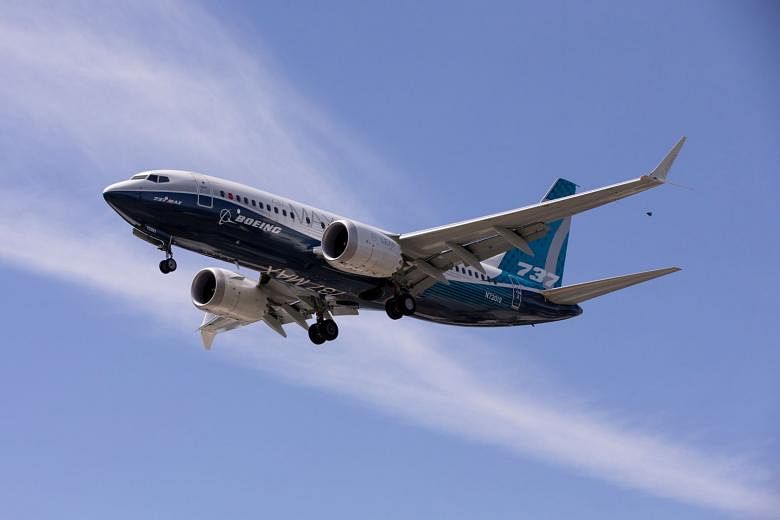WASHINGTON • US aviation regulators have proposed a long list of fixes to Boeing's grounded 737 Max in one of the most extensive sets of requirements the agency has issued following an accident.
The Federal Aviation Administration (FAA) on Monday sought public comment on the changes it expects of the plane linked to two fatal crashes. In addition to fixes specific to the system implicated in the accidents, it would mandate broad computer changes to improve reliability, add a warning light that was inoperative in the two crashes and require rerouting of electrical wires that do not meet safety rules.
The release of the FAA proposal shows that, after 16 months of the plane's grounding and a series of investigative reports and congressional hearings, aviation regulators are satisfied that the fixes will allow the plane to safely resume service.
Flight tests of the redesigned systems by FAA were completed on July 2. The agency "has preliminarily determined that Boeing's proposed changes to the 737 Max design, flight crew procedures and maintenance procedures effectively mitigate the airplane-related safety issues" revealed in the crashes, it said in a summary report.
The step is a welcome milestone, but has to be approached with caution because other critical regulators in Europe and Canada have not acted, said Teal Group's industry analyst Richard Aboulafia.
"We'll see what the commentary period brings and we'll see, most importantly, what the international partners do," Mr Aboulafia said.
While the European Aviation Safety Agency has not yet been able to conduct its own test flights of the Max, Boeing has demonstrated compliance under the European standards, the FAA said in its summary of the review.
The FAA's proposal for fixes and a preliminary report on its findings from its own internal investigation provide the most detailed accounting to date by the agency on the plane's original shortfalls and what went wrong in the two crashes.
The actions would cost US airlines about US$1 million (S$1.4 million) for the 73 planes registered in the country, the FAA said. The agency did not estimate how much it would cost to make the required changes on the several hundred jets registered in other countries and did not account for Boeing's costs.
The manufacturer may cover some of the airlines' repair costs under warranty, the FAA said.
The FAA also proposed requiring a test of the sensor - known as an angle of attack vane - that failed in the crashes and giving each aircraft a test flight before it is permitted to return to service.
The fixes outlined by FAA apply only to the Max models, but the agency said Boeing is also considering some changes to the 737 Next Generation family, which preceded the Max but were not susceptible to the same failure.
There are 45 days set aside for public comment. That means the plane most likely cannot get the official go-ahead to return to the skies until October at the earliest.
With airlines having to retrain pilots and perform maintenance on the grounded fleet, it will take weeks or months longer before the planes begin carrying passengers.
The changes listed by the FAA track with those that have been discussed for months, indicating no new problems were found in the later stages of the agency's review.
A pair of crashes - each tied to the same flawed system that malfunctioned - killed 346 people less than five months apart. The first occurred on Oct 29, 2018, in the Java Sea shortly after the plane's take-off from Jakarta. The second was on March 10 last year in Ethiopia. The plane was grounded worldwide three days after the second crash.
The FAA said a feature of the plane, known as the manoeuvring characteristics augmentation system, had failed to meet safety requirements because it could fail with a single malfunctioning sensor and its repeated attempts to push down a plane's nose could overpower pilots who did not react properly. In both crashes, a malfunctioning sensor that erroneously reported that the planes were pointed too high began automatically and repeatedly pushing down the noses of the jets.
BLOOMBERG

